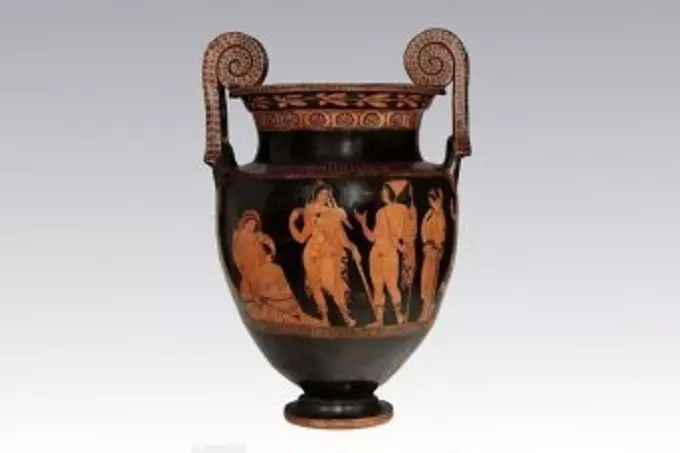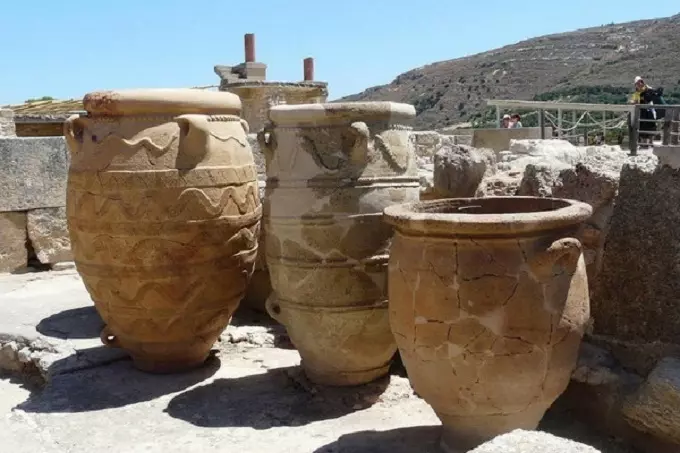Fossil fuels were used in ancient Greece 3,000 years ago

An international team of archaeologists has discovered that more than 3,300 years ago, Mycenaeans stoked their ovens with coal. This is the earliest known use of fossil fuels in Europe. The study, published in mid-December in Nature Scientific Reports, pushed that mark back nearly a millennium. The scientists also presented a vivid picture of the highly developed civilizations that existed in the Mediterranean during the Late Bronze Age, which didn’t look as archaic as they might seem.
Scientists made the discovery by analyzing the teeth of people who lived in the Bronze Age across the Mediterranean: the Mycenaeans from Tirinth in the Peloponnese and Chania in Crete, the Hittites from Alalakh in modern Turkey, the Canaanites from Megiddon in Israel and the ancient Egyptians from the Nile Valley.
The team, which included three dozen researchers from Germany, Greece, Israel, and elsewhere, conducted a chemical analysis of the teeth of 67 Bronze Age people. This was part of a larger project to study the culinary traditions of the period by analyzing food residues deposited in the tartar.
Most of the teeth the archaeologists analyzed contained chemical fire markers, indicating that these people were frequently exposed to smoke during their lives. According to archaeologists, these markers were caused by inhaling smoke from wood or dung fires. This is nothing unexpected for a time when people used fire not only for heating but also for cooking and lighting their homes. But what really surprised the researchers was that traces of benzoic acid, benzamide, and other potentially dangerous chemicals associated with the burning of lignite, a rock also known as lignite, were found on some of the teeth.

Unexpected chemical elements were found in six people found in 13th-century B.C. burials in the Mycenaean city of Tirinthus.
“The fact that these chemicals got into the plaque through simple inhalation means that people were exposed to charcoal smoke day in and day out for most of their lives” notes Philip Stockhammer, professor of archaeology at Munich University, who led the team.
So far, evidence of the earliest use of fossil fuels in the West has been found in the writings of Theophrastus, a Greek philosopher, and naturalist who lived in the fourth and third centuries B.C., nearly a thousand years after the fall of the Mycenaean civilization. In his treatise On Stones, this disciple of Aristotle described the use of coal in metallurgy and how fuel could easily be gathered from the ground around Olympia.
Although the new find significantly pushes back the dating of the use of coal in Europe, Stockhammer and his colleagues believe that this is probably not the first time that mankind has burned fossil fuels. For example, recent excavations in China have provided evidence that coal was used in the Far East in the 16th century B.C.
However, the question arises: why is the evidence of industrial pollution found only on the teeth of Mycenaeans but not in the dental plaque of other inhabitants of the Mediterranean? Of course, this could be due to sampling bias, but Stockhammer suggests that other factors also play a role here.
First, Greece had large deposits of lignite, which, as Theophrastus noted, could be easily mined. Second, it is likely that the Mycenaeans had little choice. Bronze Age Greece was a densely populated country with almost no forests. This meant that there was not enough firewood for the large-scale production of pottery and metal, which was done industrially in the major Mycenaean centers such as Tirinth and Chania, Stockhammer notes.
In addition, the use of lignite allowed better control over the temperature needed to make the exquisite Mycenaean pottery, which was in great demand throughout the Mediterranean.

All this supports the idea that teeth with traces of industrial contamination belonged to workers employed in the metallurgical or pottery industries, which were the basis of the economy of the Mycenaean civilization. According to Stockhammer, control over the production of these goods was so important that the workshops, even though they might emit toxic smoke, were usually not taken out of the settlements but built near the palace complex of the ruler of each city.
The effects of grueling labor in these ancient factories are visible not only on the teeth of the workers. Some of them showed signs of hard physical labor, such as degenerative and rheumatic changes in the skeleton, as well as overdevelopment of the right arm muscles. This may indicate the hard work of the furnace operators.
The ribs of some workers also showed signs of chronic inflammation of the lungs, no doubt due to prolonged exposure to coal smoke. Interestingly, traces of hard labor and exposure to coal fumes were found on both male and female skeletons, suggesting that women may also have worked in Mycenaean factories.
So perhaps the tainted teeth of Mycenaean workers should remind us not of the Bronze Age industrial revolution but of a time much closer to us. As far as we can tell, the Bronze Age was an era of rapid progress, growing trade relations, and great wealth. But all this led to dramatic climate change, overexploitation of natural resources, and social inequality.




